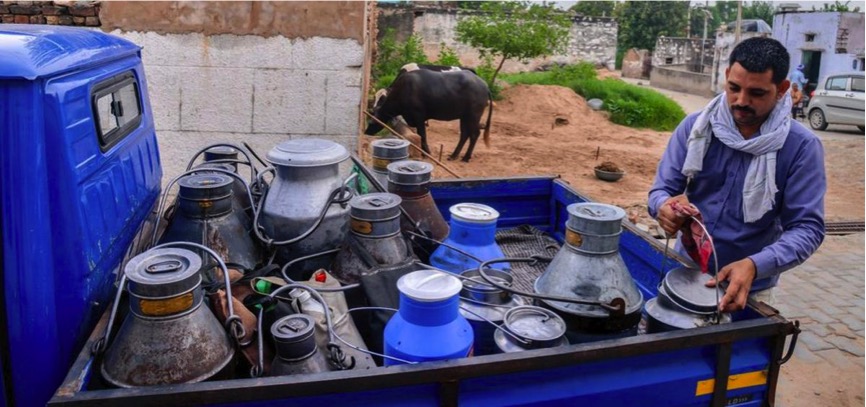Livestock is emerging as an important sector in the socio-economic development of Jammu and Kashmir. With almost 80 per cent of the Union Territory population residing in rural areas, about 60 per cent of total revenue is generated by the agriculture and animal husbandry sector.
As such, dairying has the potential to become an additional source of income for the citizens of Jammu & Kashmir.
The Union Territory produces 70 lakh liters of milk per day whereas Kashmir, alone, produces about 40 lakh liters of milk per day out of the total. South Kashmir leads in milk production. In Jammu and Kashmir, thousands of farmers and budding entrepreneurs have been hugely benefited from dairy farming owing to its profitability and increase in demand. The government is also encouraging more youth to join this sector that is climatically viable too. There is a great demand for establishing dairy farming units in Jammu and Kashmir. According to an estimate, presently some 1,700 dairy units are required in Kashmir so the dependence on imports from neighboring states is cut permanently.
Dairy farming, thus, has the potential to generate jobs for thousands of unemployed youth. In view of this, the Milk Production Expansion Plan proposed that the Jammu and Kashmir Milk Producers Cooperative Limited (JKMPCL) will raise the capacity of JKMPCL from 50,000 LPD of milk production to 2.5 Lakh LPD in the next three years.
Milk production takes place all around the globe. Worldwide demand for dairy continues to increase in large part due to population growth, urbanisation and rising incomes in India. And Jammu and Kashmir Union Territory is no exception. Yet, with an increasing demand for dairy, there is growing pressure on natural resources, including freshwater and soil.
Farmers, the world over, can profoundly reduce environmental impacts through the use of better management practices and technologies.
On average, a bovine animal weighs 400 kg and discharges 15-20 kg/day of dung and 12-14 liters/day of urine. Solid wastes produced from dairy farms and gaushalas are organic and non- hazardous in nature. So, proper handling and disposal are required.
Properly managed manure application and grazing can improve the soil health of pastures and croplands. In some conditions, dairy cows can also contribute to healthy habitats through well- managed grazing.
Ecologically sound and economically viable technological solutions can be promoted across the country to handle various types of bio-wastes for achieving targets of zero waste and maximum recovery of materials.
Several central and state-sponsored schemes have also been launched to help and uplift the marginalised farmers. The Integrated Dairy Development Scheme started has hugely benefited the farmers. Beneficiaries with five to 50 cow units can also avail several benefits from the government-run schemes. As of now, there are 476 single five cow units in Kashmir.
When it comes to dairy waste, which in itself is the world’s best organic fertiliser, only awareness among dairy owners combined with strict implementation by concerned local bodies, is required to prevent such a valuable resource from ending up in drains.
Cattle urine is a powerful natural pesticide and, if used properly, can save human beings from the harmful effects of pesticide residues.
Management of precious dairy waste can be done by using very simple technologies and in a very cost-effective manner depending upon the number of cattle heads, space, and budget. Biogas production, one of the renewable energy alternatives to fossil fuels, can be encouraged using this waste organic matter.
Source : The Kashmir Monitor Feb 27th 2022

